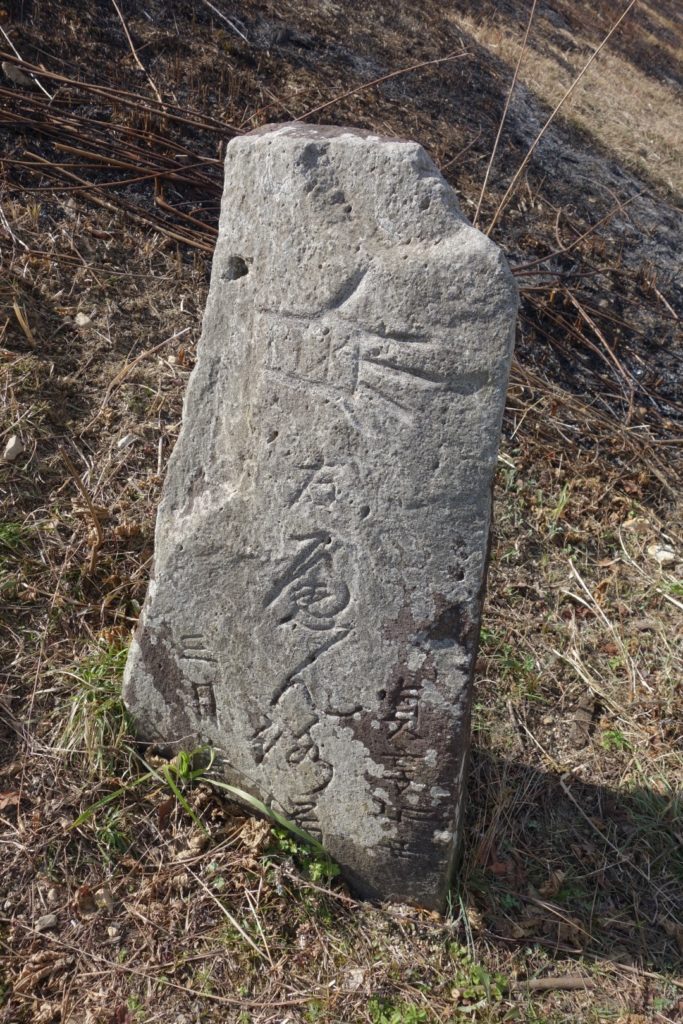
On the way to No.48 Sairin-ji, there is a signpost made in 1685, which is the second oldest in Shikoku Henro Pilgrimage. There’s also Monjyu-in, Bekkaku No.9 sacred temple, which is also a family temple of Emon Saburo, the founder of the Shikoku Henro pilgrimage.
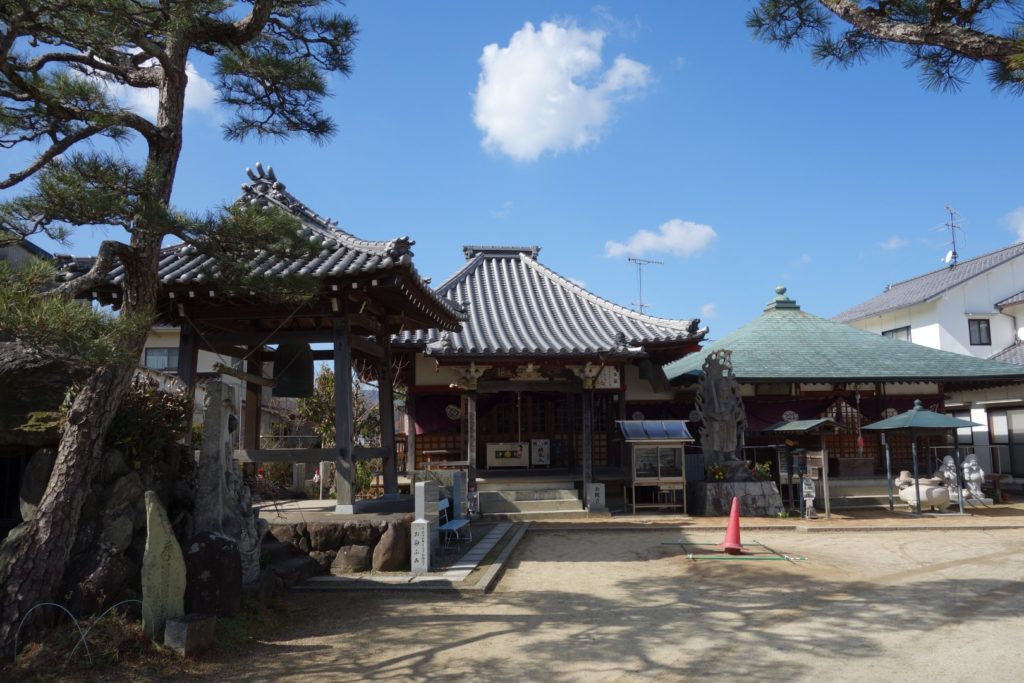
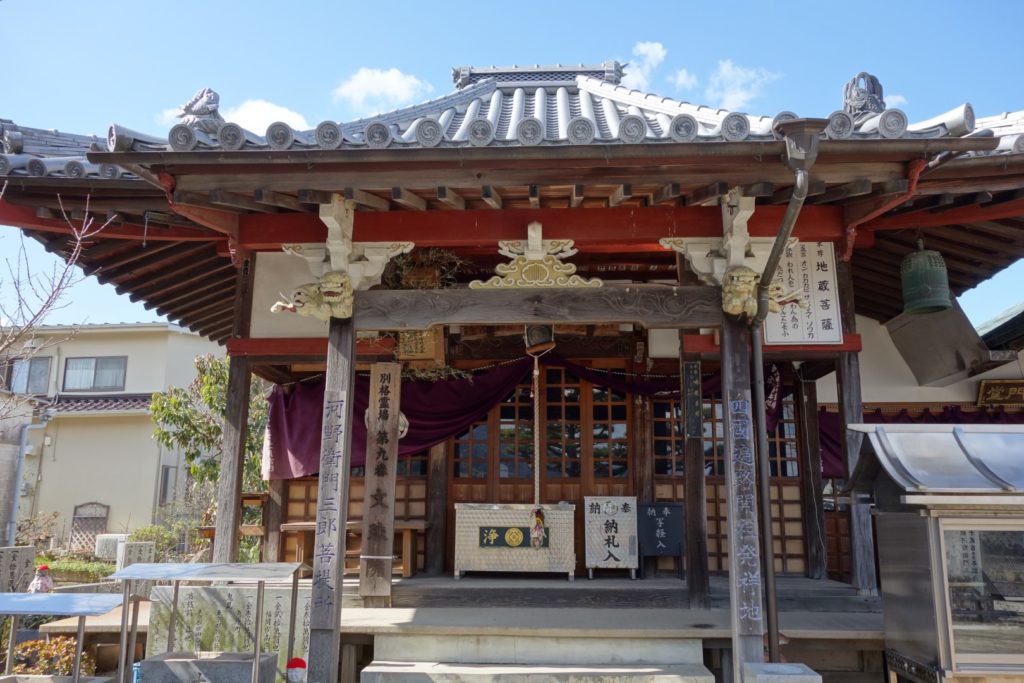
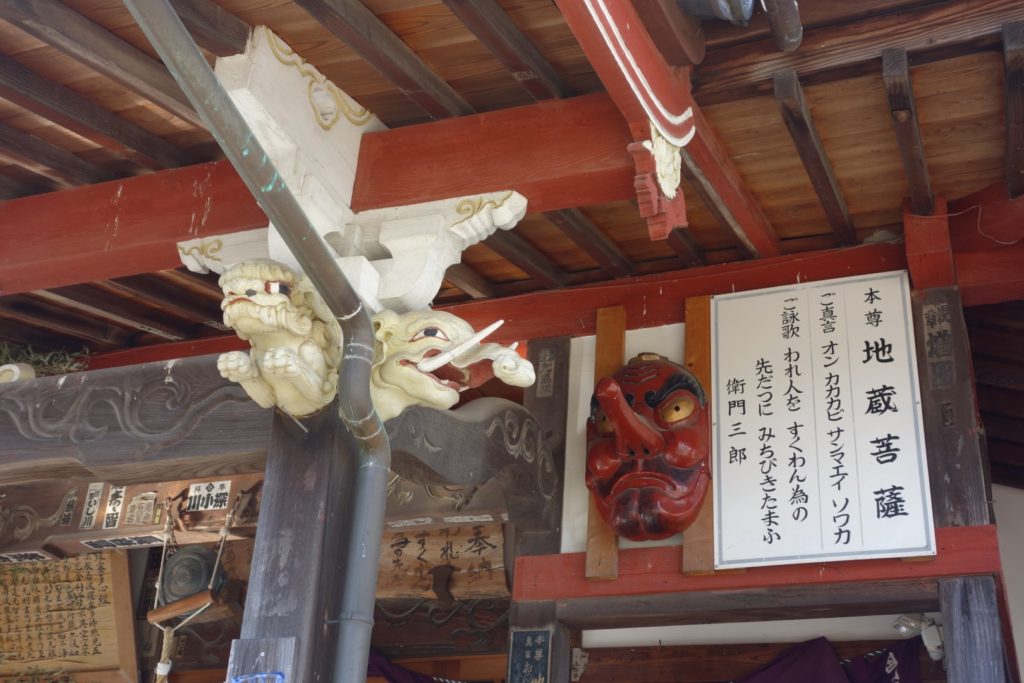
Since this temple is associated with the founder of the Shikoku Henro pilgrimage, Emon-Saburo, I worshiped as part of my pilgrimage.
A mendicant visited the house of Emon Saburō, richest man in Shikoku, seeking alms. Emon refused, broke the pilgrim’s begging bowl, and chased him away. After his eight sons fell ill and died, Emon realized that Kūkai was the affronted pilgrim and set out to seek his forgiveness. Having travelled round the island twenty times clockwise in vain, he undertook the route in reverse. Finally he collapsed exhausted and on his deathbed Kūkai appeared to grant absolution. Emon requested that he be reborn into a wealthy family in Matsuyama so that he might restore a neglected temple. Dying, he clasped a stone. Shortly afterwards a baby was born with his hand grasped tightly around a stone inscribed “Emon Saburō is reborn.” When the baby grew up, he used his wealth to restore the Ishite-ji (石手寺) or “stone-hand temple”, in which there is an inscription of 1567 recounting the tale.
From Wikipedia
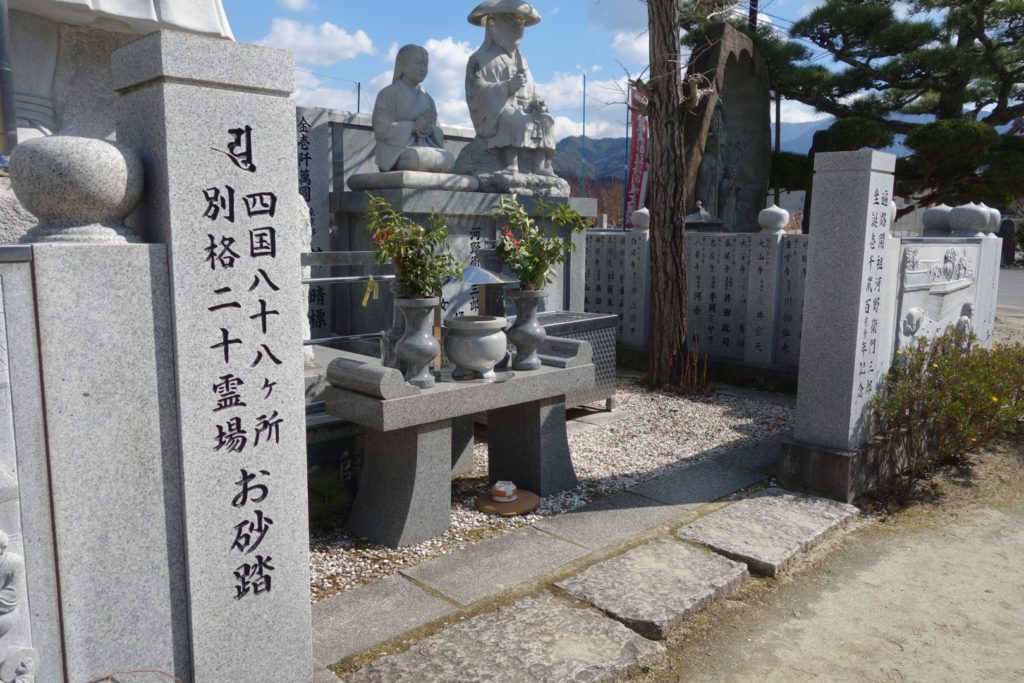

I felt this temple is quite unique. At the main temple Tengu – Long-nosed goblin is dedicated, and there’s Osuna-fumi for 20 extra sacred temples in addition to 88 sacred temples (that is available in some temples).
By the way, Osuna-fumi is also interesting. The sand from each sacred temples are gathered and if you worship this place, it is considered as same thing to actually go and worship at all sacred temples.

After walking about 1.5 Km from Monjyu-do, there’s Fuda-hajime Taishi-do.
When Emon-Saburo left for Shikoku Henro pilgrimage, he stopped here, found a statue of Kobo-Daishi, and spent the night waiting for Kobo-Daishi’s visit. Before he departed the next morning, he wrote his name and address on a piece of paper and affixed it to this temple. This was the beginning of the “Osame-fuda (votive card)”, which is also executed by modern-day pilgrims like me, hence the name of this temple is “Fuda-hajime Taishi-Do (Taishi-do as the origin of the pilgrim’s votive card)”.

| Dedicated to | Jizo-Bosatsu (地蔵菩薩) Monjyu-Bosatsu (文殊菩薩) |
| Founded by | Kobo-Daishi (弘法大師) |
| Denomination | Shingon-sect Daigo-group (真言宗醍醐派) |
| Mantra | おん かかかび さんまえい そわか On Kakakabi Sanmaei Sowaka |
| Next temple | No.48 Sairin-ji |
| Previous temple | No.47 Yasaka-ji |
Recent Comments